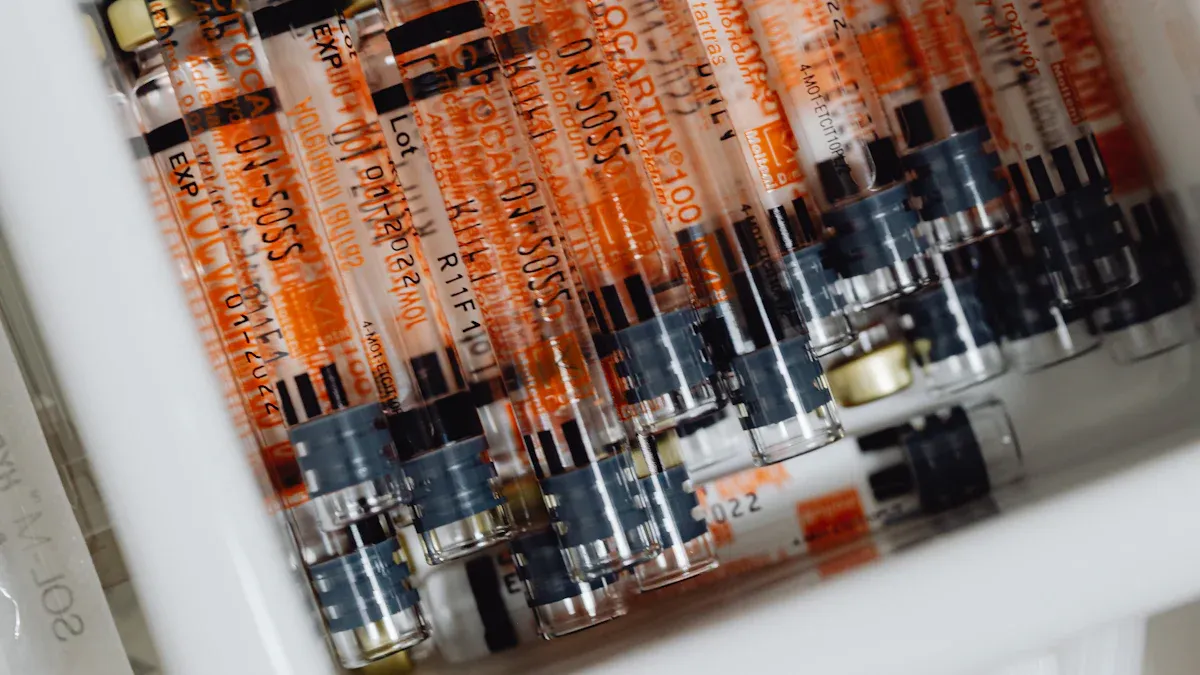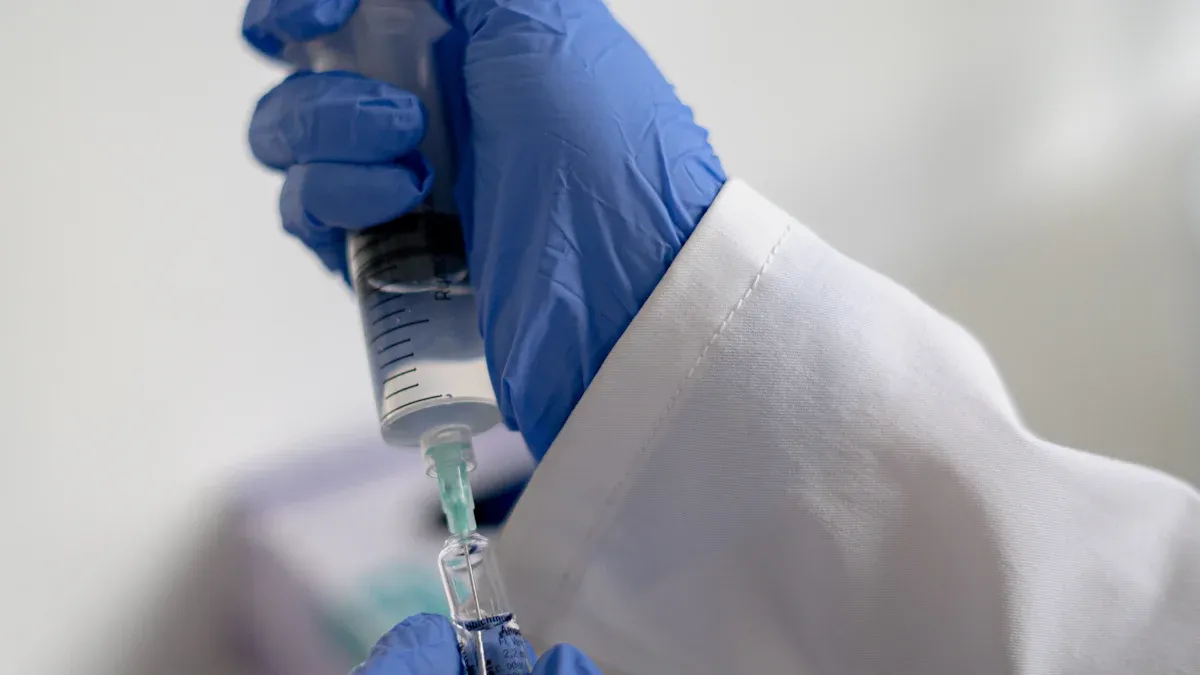Top 5 Uses of Ultra-Thin-Walled Medical PET Heat Shrink Tubing

Have you ever thought about how medical tools work so well? The ultra-thin-walled medical PET heat shrink tube plays a significant role in this. It’s used in five main ways: covering electronics, strengthening catheters, protecting sensors, holding tubing together, and assisting with small surgery tools. These applications enhance the safety and effectiveness of medical equipment.
This ultra-thin-walled medical PET heat shrink tube is becoming very popular worldwide. By 2025, its market could reach $250 million, growing 7% each year until 2033. Why is it so sought after? More people need small devices and treatments for long-term illnesses. This tubing is strong and flexible, making it essential for medical tools.
Key Takeaways
Ultra-thin PET heat shrink tubing protects delicate parts in devices.
It makes catheters stronger and bendable, helping patients feel better.
The tubing keeps sensors safe from water and dirt damage.
It improves device connections, making them safer for patient use.
This tubing helps create new designs for advanced medical tools.
Insulation Applications of Ultra-Thin-Walled Medical PET Heat Shrink Tubing
Protecting sensitive electronics in medical devices
Have you thought about how medical devices stay safe to use? The electronics inside need protection from water, dust, and damage. Ultra-thin-walled medical PET heat shrink tubing helps with this. It wraps tightly around delicate parts to keep them safe.
Think about a pacemaker. Its circuits must work perfectly to control the heart. Even a little water could cause it to fail. Using this tubing keeps the circuits dry and protected. It’s also very light and doesn’t make devices bulky, which is important for small tools.
Tip: When designing medical devices, try using this tubing. It’s an easy way to protect electronics and make them last longer.
Preventing electrical interference in critical components
Hospitals have many devices working close together. This can cause electrical interference, which may affect how devices work. For example, an infusion pump must deliver medicine without errors. Interference could cause problems and put patients in danger.
Ultra-thin-walled medical PET heat shrink tubing fixes this issue. It blocks unwanted signals from disrupting the device. This keeps important parts working properly, even in busy hospital settings.
Engineers trust this tubing because it’s strong and fits perfectly. It wraps tightly around wires and circuits, stopping interference. Its thin design also works well for small devices with limited space.
Note: By blocking interference, this tubing improves device performance and keeps patients safer.
Applications in Catheter Reinforcement and Protection

Making catheter shafts stronger and more flexible
Catheters need to be strong and bendable. They must handle tough medical tasks but still move easily. This is where the ultra-thin-walled medical PET heat shrink tube helps. It strengthens catheter shafts, adding toughness without making them heavy. This means catheters can handle more pressure without breaking.
Being flexible is just as important. A stiff catheter can hurt or cause problems. The tubing makes the shaft more bendable, so it moves smoothly inside the body. This helps doctors guide the catheter better, making procedures more successful.
Did you know? Engineers use this tubing to make catheters both strong and flexible. It’s a big improvement in medical tools.
Creating a smooth surface for patient comfort
Comfort is very important when using a catheter. A rough surface can hurt tissues and cause pain. The ultra-thin-walled medical PET heat shrink tube fixes this by making the surface smooth. This lowers friction and makes the catheter easier for patients.
A smooth surface also helps with putting in and taking out the catheter. It reduces resistance, making the process faster and less painful. Plus, the tubing is light and doesn’t add bulk, keeping the catheter slim and easy to use.
Tip for engineers: Use this tubing to make catheters more comfortable and simple to use. Small changes like this can make a big difference.
Encapsulation Applications for Sensors and Electrodes

Keeping sensors in the right place and working well
Medical sensors must be placed correctly to work properly. Even small misplacements can cause wrong readings and affect patient care. Ultra-thin PET heat shrink tubing helps by holding sensors tightly in place.
This tubing also makes sensors work better by reducing air spaces. Why is this important? Air spaces can mess up how sensors detect things like pressure or heat. By closing these gaps, the tubing helps sensors give more accurate results. Research shows that improving the dielectric constant—how materials store electrical energy—matters a lot. For example:
Special glue with the tubing lowers air space around sensors.
This raises the dielectric constant, making sensors more precise.
With this tubing, sensors stay reliable even in tough conditions.
Protecting sensors and electrodes from damage
Medical devices often face moisture, dust, and temperature changes. These can harm sensitive parts like sensors and electrodes. PET heat shrink tubing acts as a shield, keeping these parts safe and lasting longer.
Think about a heart monitor you can wear. It needs to work even if the person sweats or moves a lot. The tubing blocks moisture and dirt, keeping the device working well. Its thin design also keeps devices light and comfy to wear.
Using this tubing doesn’t just protect devices—it helps patients too. Reliable sensors mean better data, helping doctors make smarter choices.
Applications in Bonding and Securing Tubing Assemblies
Making medical device connections stronger
Medical devices need to work without failing. For tubing systems, strong connections are very important. Ultra-thin-walled medical PET heat shrink tubing helps make these connections tougher. It holds parts together tightly, even in tough conditions.
This tubing is very strong and lasts a long time. It works in freezing cold (-196°C) and very hot (135°C) temperatures. It can even handle short bursts of heat up to 200°C. With a melting point of 235°C, it’s great for tools that need harsh cleaning. The tubing shrinks tightly around parts, getting 50% smaller. This tight grip stops leaks and keeps everything secure, especially in systems that move fluids.
Fun Fact: This tubing can handle over 4,000 V/mil, making it super strong and a great insulator for electrical parts.
Keeping tubing systems clean and safe
Cleanliness is very important for medical devices, especially those moving fluids. You don’t want anything harmful getting inside. Ultra-thin wall heat shrink tubing creates a tight seal between parts. This seal blocks gaps where dirt or germs could enter.
The tubing’s smooth surface makes cleaning simple. It’s also very strong and doesn’t crack, even after many cleanings. This means it stays safe to use for a long time without risking contamination.
Tip: If you’re designing medical tools, use this tubing. It makes bonding easier and keeps devices cleaner. A small change can make a big difference.
Specialized Applications of Ultra-Thin-Walled Medical PET Heat Shrink Tubing
Helping with small surgeries using advanced designs
For small surgeries, tools must be precise and reliable. They need to work well in tight spaces while keeping patients safe. That’s where ultra-thin-walled medical PET heat shrink tubing is important. It’s more than just protection—it improves advanced surgical tools.
This tubing has many features that make it great for these surgeries:
Gives excellent electrical insulation, so devices work without issues.
Protects delicate electronics by wrapping them securely.
Handles cleaning and sterilization, making it reusable.
Improves surgical tools by fitting perfectly around them.
Prevents device problems by tightly covering surfaces.
Picture a tiny tool moving inside the body. This tubing keeps it strong, light, and working well, even in tough conditions. That’s why both engineers and surgeons trust it for modern surgeries.
Pro Tip: Designing tools for small surgeries? Use this tubing. It’s a simple way to boost performance and dependability.
Allowing creative designs for advanced medical tools
Medical tools are changing fast, and materials must keep up. Ultra-thin-walled PET heat shrink tubing is great for making new and creative designs. Its strength and flexibility let engineers try new ideas.
Here are some key features that show its value:
Feature | Benefit |
|---|---|
Tensile Strength | Stays strong under stress, keeping devices dependable. |
Sterilization Compatibility | Survives cleaning without damage, perfect for medical use. |
Medical Standards Compliance | Meets ISO and FDA rules, ensuring safety and quality. |
This tubing is also very strong and works well for tools like catheters. It’s safe for the body and can handle many cleanings, making it a top choice for advanced tools.
Whether you’re creating a flexible catheter or a complex tool, this tubing works for your needs. It helps push the limits of medical technology.
Fun Fact: Engineers love this tubing because it’s strong, flexible, and safe—all in one lightweight material.
Ultra-thin-walled medical PET heat shrink tubing has changed how medical tools are made. Its five main uses—insulating electronics, strengthening catheters, protecting sensors, securing tubing, and improving surgery tools—show how useful and dependable it is. These uses make devices safer, stronger, and more comfortable for patients.
Why does this matter to you? This tubing isn’t just a material; it’s a big deal. It helps build smaller, smarter, and safer medical tools that save lives every day.
If you’re making new tools or fixing old ones, this tubing has many uses. Its toughness, flexibility, and accuracy make it a key part of today’s healthcare progress.
FAQ
1. What makes ultra-thin-walled PET heat shrink tubing special?
This tubing is strong, flexible, and very light. It protects, insulates, and lasts a long time. Its slim design works well for modern medical tools.
2. Can it handle very hot or cold temperatures?
Yes! It works in freezing cold (-196°C) and hot (135°C) conditions. It can also take short bursts of heat up to 200°C, making it great for cleaning and tough environments.
3. Is it safe to use inside the body?
Yes, it is. This tubing meets strict medical rules like ISO and FDA standards. It’s safe for the body and works well for catheters and surgery tools.
4. How does it make patients more comfortable?
The tubing makes surfaces smooth, lowering friction. This helps devices like catheters go in and out easily, causing less pain during procedures.
5. Why is it important for today’s medical tools?
It helps create smaller and better designs. Its flexibility allows engineers to make advanced tools for less invasive surgeries, improving patient care and healthcare progress.
Tip: Designing medical tools? Use this tubing for better safety, comfort, and durability.
See Also
Exploring Key Uses of Ultrathin PET Heat Shrink Tubing in Medicine
The Importance of Ultra-Thin PET Heat Shrink Tubing in Healthcare
Advantages of Using FEP Heat Shrink Tubing in Medical Applications
Essential Information on PET Heat Shrink Tubing for Electronics
Selecting the Ideal Ultra-Thin PET Heat Shrink Tubing for Projects

